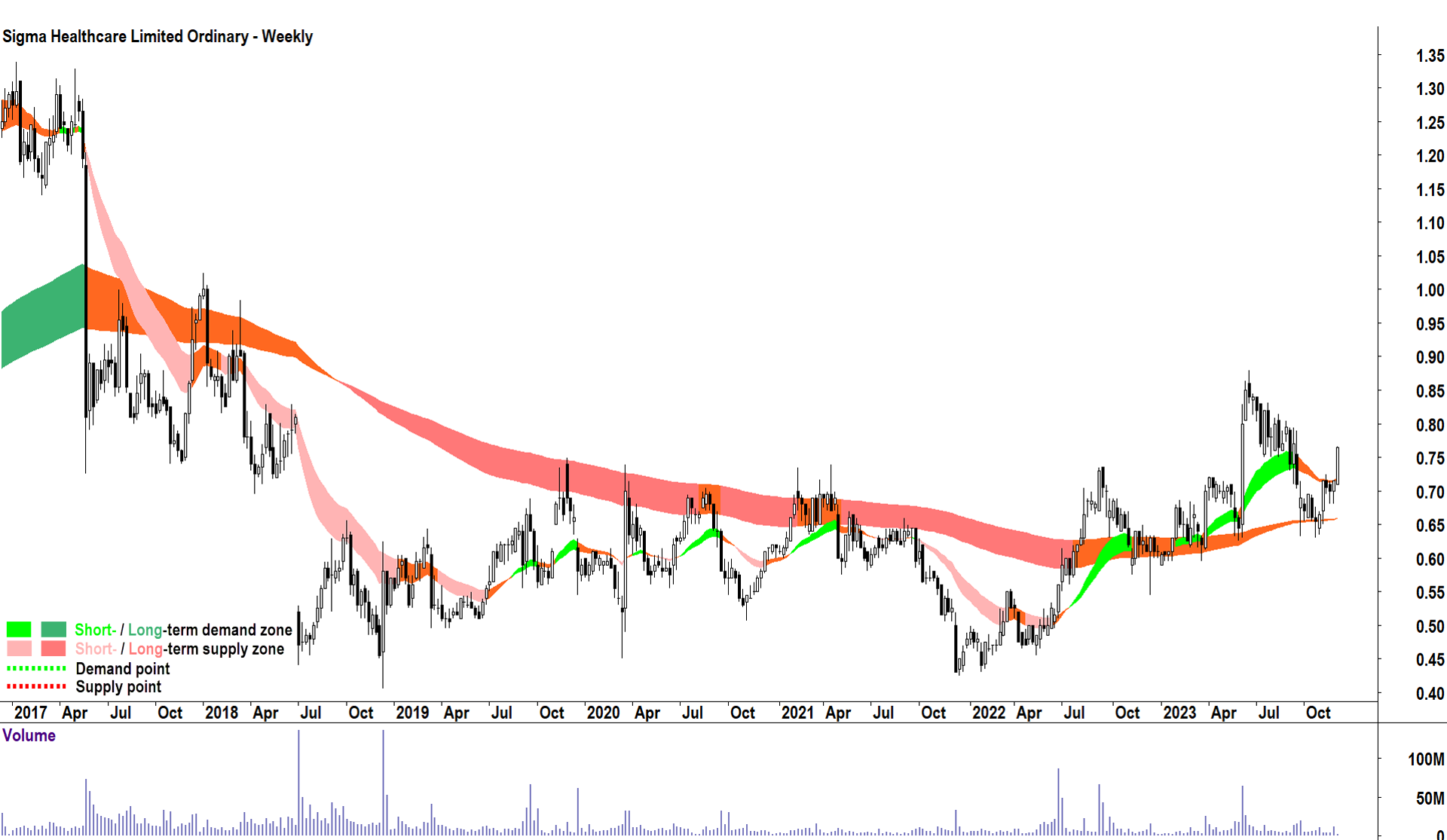Chemist Warehouse is listing on the ASX, here’s what you need to know
Washington H. Soul Pattinson (ASX: SOL) vs Perpetual (ASX: PPT), Woodside Energy (ASX: WDS) vs Santos (ASX: STO) - it was a massive week for M&A on the ASX last week! But perhaps the most interesting move, particularly in terms of how it is being engineered, is the reverse takeover of Sigma Healthcare (ASX: SIG) of Chemist Warehouse Group (“CWG”).
The first two M&A plays are fairly typical: Big fish pursues little fish. In the case of Sigma vs CWG, however, it’s the other way around. Sigma has a market capitalisation of $810 million making it roughly the ASX’s 330th largest company. It delivered earnings before interest and tax (“EBIT”) of $19.3 million in FY23 versus FY24 guidance of $26 million – $31 million.
CWG is not listed on the ASX, and it delivered EBIT of $460 million in FY23 (no indication of FY24 EBIT guidance has been provided). In terms of profitability, CWG is roughly 16 to 23 times bigger than Sigma (using the midpoint of FY24 guidance and actual FY23 data, respectively).
Why then would a smaller company try to take over a much bigger company? Well, reverse takeovers are usually less about a small fish trying to swallow a big fish, and more about the big fish getting a quick path to an exchange listing via the small fish’s existing listing. The Sigma-CWG deal is really just a quick and low-cost way for CWG to get listed on the ASX.
Deal details
Sigma is looking to “acquire” CWG for $700 million in cash and approximately 573 million Sigma shares. Once the deal is done, CWG shareholders will own 85.75% of the merged company with existing Sigma shareholders owning the remaining 14.25%. After you see these numbers, the deal probably makes more sense in terms of who’s really acquiring who!
Sigma is refinancing $300 million of existing debt and taking on $700 million of new debt to help pay for the deal. It will also undertake a non-renounceable entitlement offer to raise $400 million to fund working capital, execution of the Chemist Warehouse supply contract, and various growth initiatives.
Reverse psychology
It makes a great deal of sense for CWG to choose this path to a public listing. The typical way for a company to go public is by way of an initial public offering or “IPO”. This can be very costly in terms of meeting onerous regulatory and exchange requirements, as well as marketing, and underwriting fees with the big brokers.
Instead, rather than upfront costs, CWG shareholders get some cash, a relatively low-cost path to public trading, and the real kicker in the deal – up to $60 million on potential cost synergies expected to be released through the merger.
The synergies are expected to be so substantial because CWG is already a major part of Sigma’s business. Sigma is the wholesale distributor of CWG’s pharmaceutical products, to the tune of over $3 billion per year.
Add in Sigma’s Amcal, Discount Drug Stores, and Guardian Pharmacies, which were previously rivals to CWG’s Chemist Warehouse brand, all coming under the same umbrella – it’s potentially a tectonic shift on the retail side of things. Importantly, the combined entity will have the advantage of spanning both wholesale and retail capabilities to create a major player in the Australian pharmaceuticals market.
Fundies forced to buy?
The merged Sigma-CWG group will likely have an EBIT of around $495 million and a market capitalisation of $8.8 billion, making it roughly the 60th biggest company by market capitalisation on the ASX. It is expected the company will be added to the S&P/ASX 200 and S&P/ASX 100 indices in the next quarterly rebalancing of these indices.
This is an important factor in itself. On the ASX – size really does matter. Much of the investment dollar slated for the ASX comes from index fund managers (think your major superannuation funds here). By rising from around 330th to 60th on the ASX market capitalisation list, the merger of Sigma and CWG will trigger a degree of forced buying for Sigma shares by index-tracking funds that must own stocks in the major indices at the same weightings they occur within those indices.

Sigma Healthcare’s stock price was potentially turning the corner prior to the merger
Sigma was potentially turning the corner in terms of profitability prior to the merger. As noted above, earnings are recovering after a long period of underperformance and resultant restructuring. The timing of the merger appears to be very good in terms of building on Sigma’s newfound momentum, and bolting Sigma’s wholesale and retail businesses into the bigger opportunity that CWG potentially presents.
Getting the merger over the line
The merger is subject to the agreed conditions and Sigma shareholder approval but has the support of both company’s boards. The only major hurdle is likely getting the rubber stamp from the ACCC –and this is far from a foregone conclusion.
Major industry lobby group, The Pharmacy Guild of Australia, has publicly voiced its concerns about the proposed merger, saying “increased corporatisation” could jeopardise pharmacist owned community pharmacies. Various analyst research I’ve read this morning suggests Sigma-CWG would likely have to sell or spin off its Amcal pharmacy chain.
If the deal does get over the line, the merged group should start trading as a single company on the ASX early in the second half of 2024. You’ll get your chance to trade in Sigma shares well before that, though, as they’ll be back trading on the ASX on Wednesday 13 December.
This content originally appeared on Market Index.
3 topics
1 stock mentioned

